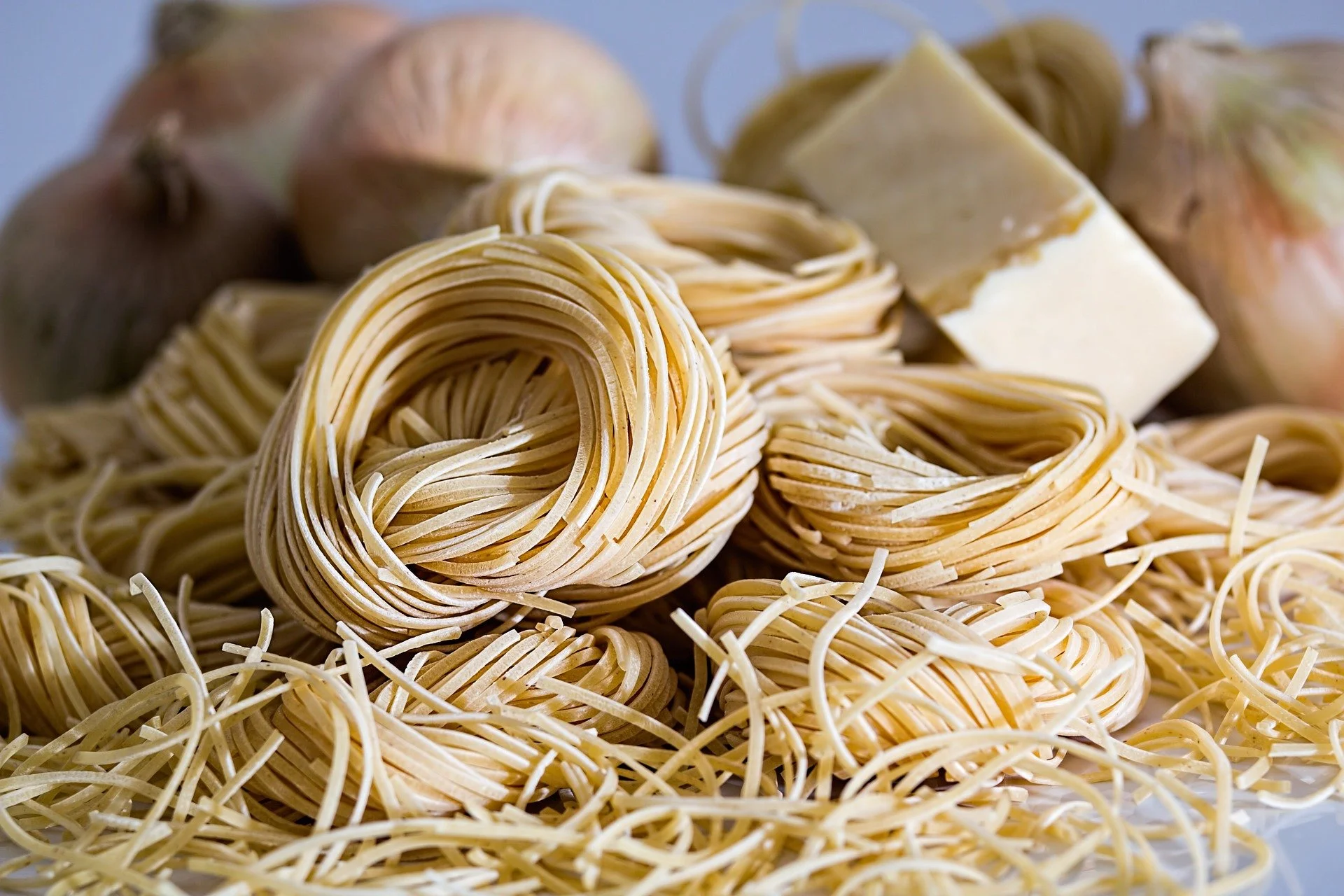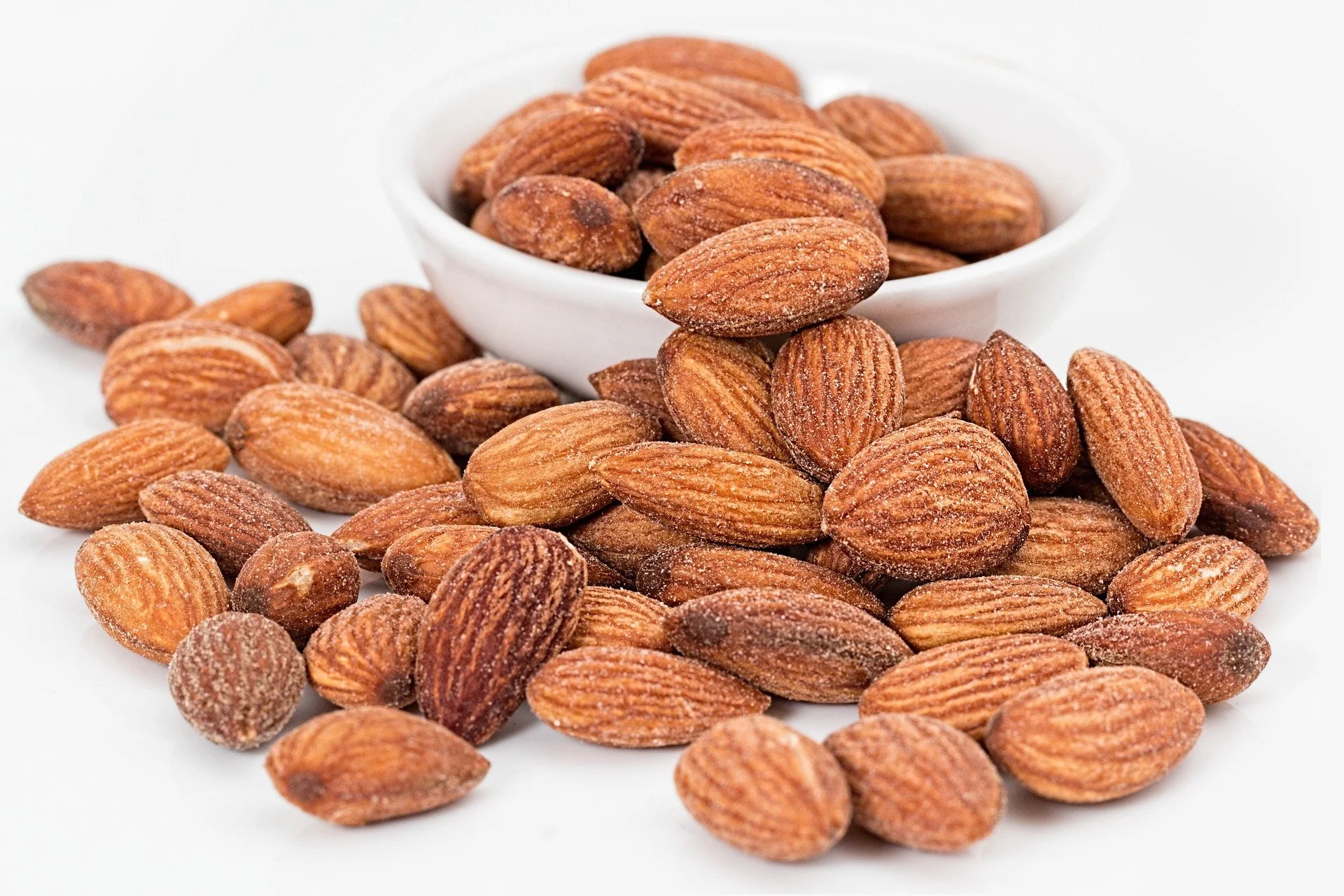10 Household Staples For A Balanced Diet
On a good week, I will plan all my lunch meals and maybe some dinners, but not all meals. For the days when I don’t have dinner planned, I get tempted to order takeout because it’s convenient and I’m too tired to whip something up. If this sounds relatable, this list is for you!
This list may differ depending on your dietary needs (i.e, food allergies/intolerances) and is not meant to be exhaustive. The goal of having these items in your pantry is to help you and your family build balanced meals - even if you’re feeling tired and unmotivated!
A quick reminder, a ‘balanced’ meal consists of a carbohydrate, protein, and fruit/veg.
1. Shelf Stable Grains
Examples include rice, dry pasta, and dry noodles. These foods can stay in your pantry for longer compared to bread and fresh pasta/noodles. Having variety is always encouraged!
2. Potatoes
As an alternative to grains, potatoes provide other nutrients and can switch things up for mealtime. They’re also very versatile to cook (e.g., mashed, scalloped, baked, roasted, fried). I would suggest choosing either potato or grain as the carbohydrate portion of your meal.
3. Frozen/Canned Fruit
Having fresh fruit is wonderful, especially those that are in season and can be more affordable, such as bananas and apples. However, if you’re someone who does not eat fruit regularly, then having them sit and go bad in your fridge is not helping anyone. Frozen/canned fruits are a great alternative and can be helpful if you want to skip the ripening stage. They’re also convenient for fruit smoothies.
4. Frozen/Canned Vegetables
Similarly, vegetables don’t have to be fresh! $7 for a head of lettuce? No, thank you. I find that having a bag of frozen broccoli or peas available makes adding veggies to meals 10x easier. I would microwave the frozen veg and add them to pasta, instant noodles, instant pot meals, or curry.
5. Eggs
One of the most affordable and versatile proteins available. You can make so many dishes with eggs and experiment by using a variety of cooking methods. Check out recipes here for inspiration.
6. Meat & Fish
Other than eggs, you should try incorporating other protein foods for other nutrients. This may include poultry, occasional red meat, and fish. I suggest getting frozen meat/fish and canned tuna/salmon so you always have protein on hand. My grocery hack is freezing chicken breasts and ground meats (all pre-portioned) so they last longer.
7. Plant Protein
Even if you eat meat and fish regularly, try adding some plant proteins to your diet. Plant proteins include lentils, beans, chickpeas, tofu, tempeh, and plant-based meats. Dry/canned legumes are shelf stable and easy to add to soups, pasta sauce, and chili. Also, hello extra fibre!
8. Milk and/or Milk Alternative
This can be optional depending on your preference, but I try to encourage my clients to get adequate calcium. Dairy and plant-based milk is one way of achieving that. If you’re lactose intolerant, choose a lactose free option. Many grocery stores carry a wide range of milk products with varying fat content and flavours. Personally, I like having cow’s milk and/or soy milk at home.
9. Little to No Prep Snacks
Always busy and on-the-go? Snacks are your friends. If you know you get the munchies during or after work, have healthy snacks readily accessible to tie you over until your next meal. This can be a granola bar, trail mix, yogurt, cheese, raw veggies with dip, and fruits.
10. Fun Foods
Foods that are considered “unhealthy” have a place in our pantry because avoiding them altogether is not realistic and not much fun. Along with all the other foods in your home, you can now have a true, balanced diet.
Written by: Cheryl Ching, MSc, RD
Reviewed by: Kristie Pun, MHSc, RD & Pauline Bakowski, MHSc, RD
Publication Date: February 16, 2023
Disclaimer: Our blog content is for general education purposes and may not be suitable for individual health conditions. Please see your health professional or book an appointment with one of our dietitians for personalized health recommendations.





